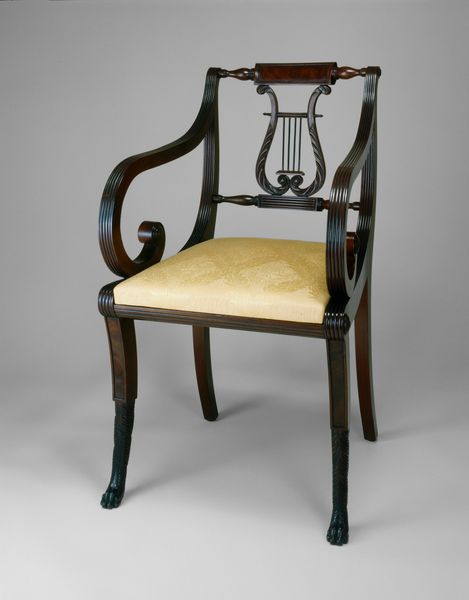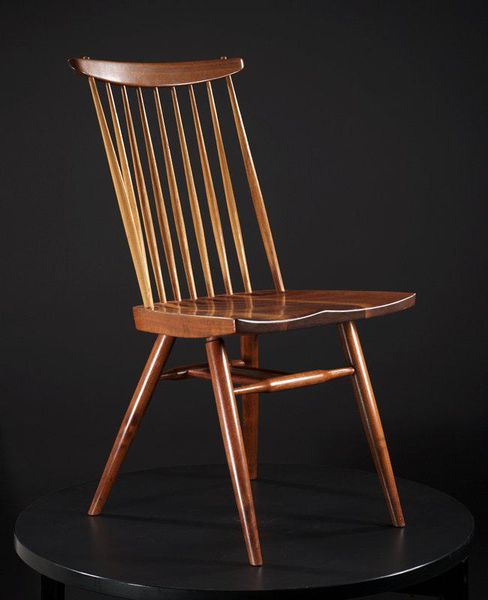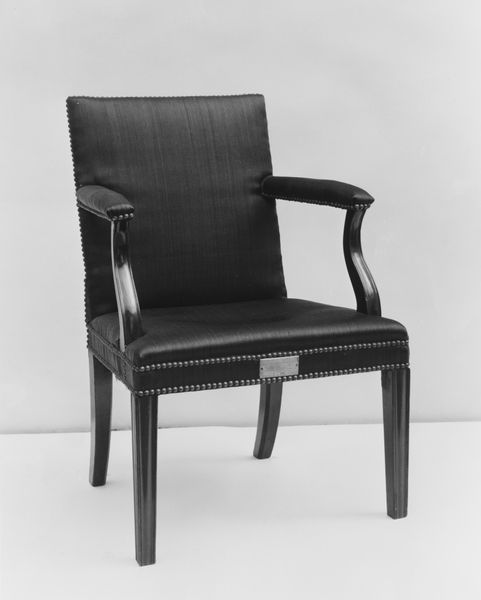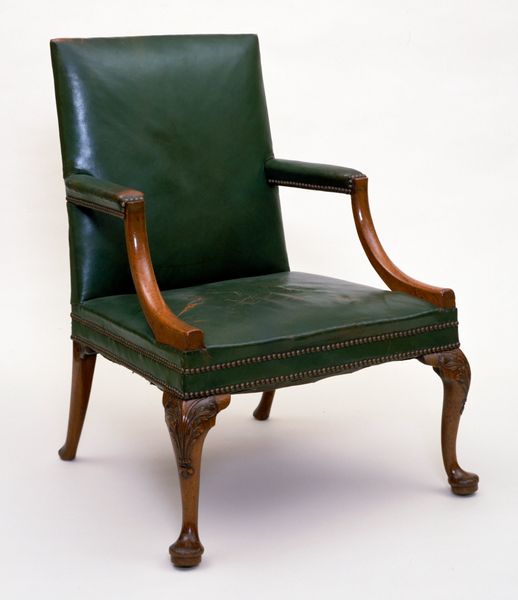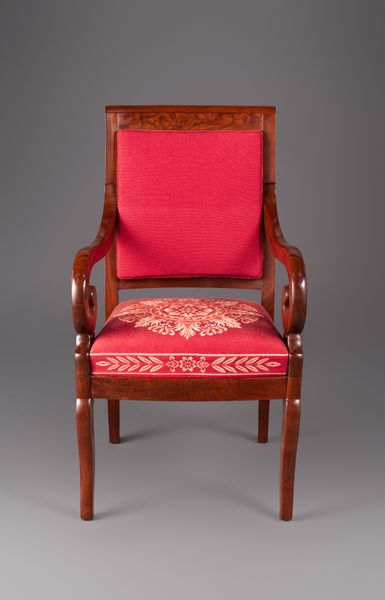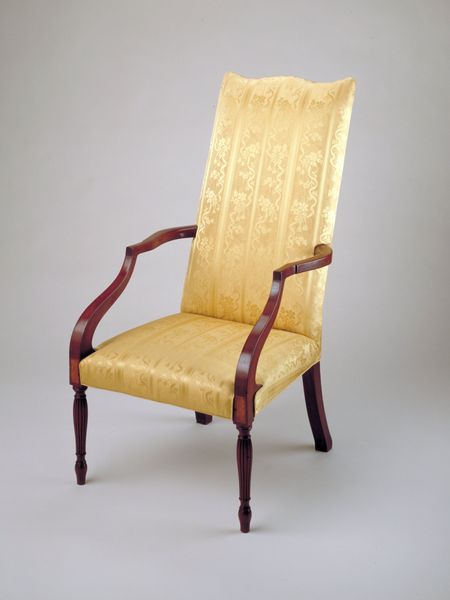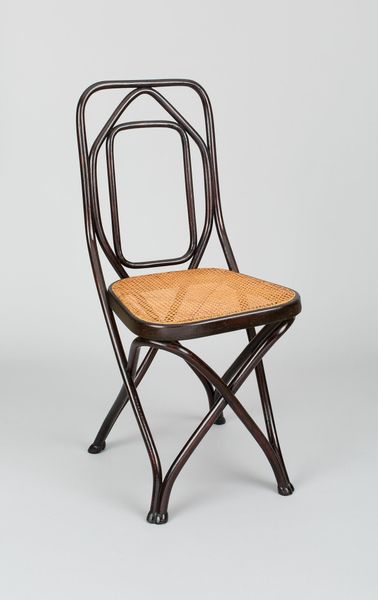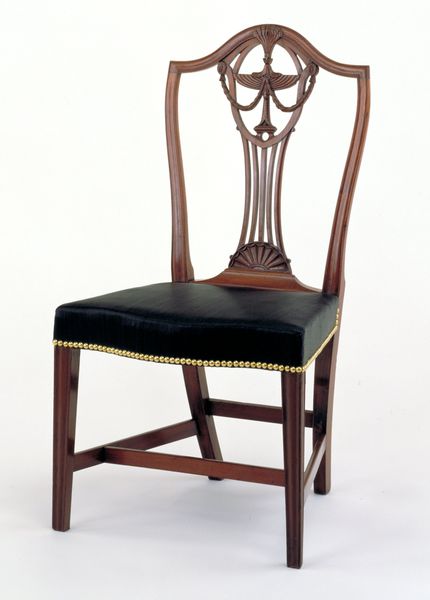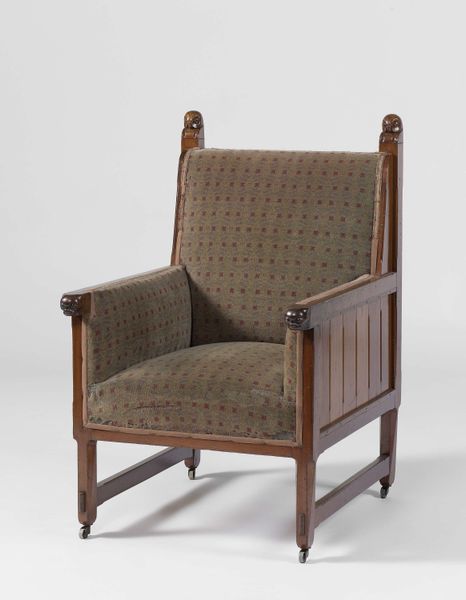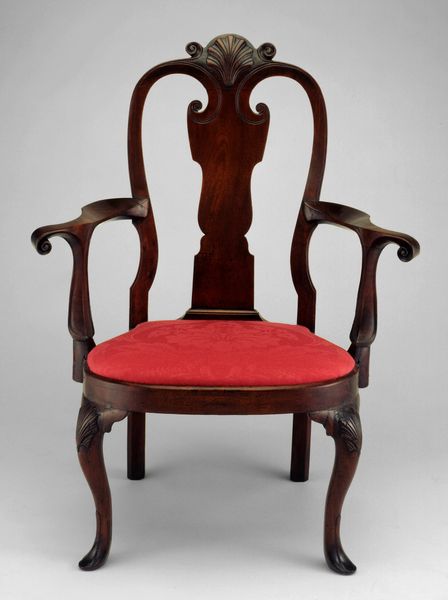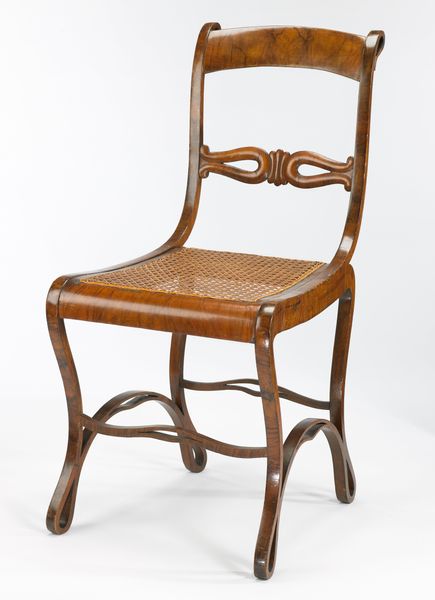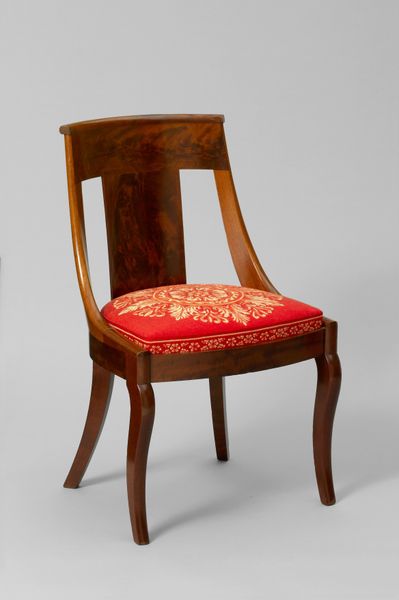
wood
#
wood
#
musical-instrument
Dimensions: Overall: 25 3/4 × 10 1/16 × 13 5/8 in. (65.4 × 25.6 × 34.6 cm)
Copyright: Public Domain
Editor: Here we have "Mandolin," crafted in 1916 by the Gibson Mandolin-Guitar Manufacturing Company. It's currently housed at the Met. The rich wood grain gives it such a warm, almost comforting feel. How do you interpret this work? Curator: Well, let's think about 1916. The world was at war, and the United States teetered on the edge of joining. This wasn't just an instrument, it was a piece of cultural identity, perhaps even a symbol of hope and continuity in a time of immense upheaval. This Gibson isn't merely an object; it embodies the human need for creative expression in times of conflict and the need for communal music making, as a solace or distraction. Doesn't the craftsmanship speak to that resilience? Editor: That’s fascinating. So you see it as connected to the socio-political context of its time? Almost a quiet form of resistance, perhaps? Curator: Precisely. And think about who would have played it. Was it mass produced for the wealthy or would the average citizen also enjoy it in community gatherings? It likely represents a form of popular culture from which subcultures grow. Can you imagine this at social justice gatherings? Editor: I hadn’t considered that. I was so focused on the individual craftsmanship. I guess I thought more about bluegrass musicians in Appalachia! Curator: Context shifts our understanding, doesn’t it? Suddenly, it's not just an instrument; it's a silent participant in history. It forces us to consider social relations and hierarchies. Editor: I totally get it now! It is more than a beautiful wooden object – it speaks to history and people’s resilience. Curator: Precisely. It is amazing to look at social justice using art.
Comments
No comments
Be the first to comment and join the conversation on the ultimate creative platform.
